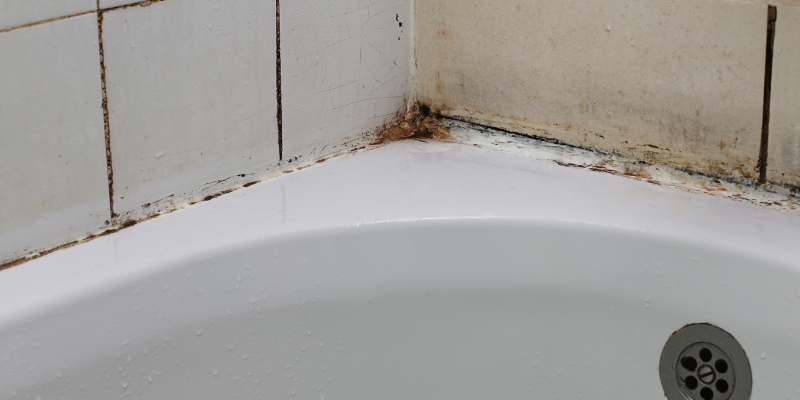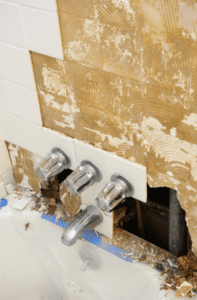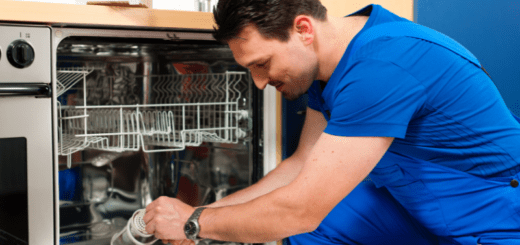How to Prevent Water Damage Behind Shower Tiles
As a homeowner, one of the most important things to prioritize is protecting your home from water damage. Unfortunately, water-resistant surfaces can often deteriorate over time and become porousPorous describes a material that contains small openings or ... More, making them vulnerable to collecting moisture and causing leaks. Today we’ll discuss an area of your bathroom that’s especially prone to water damage: the walls behind the tile in showers and bathtubs. Without proper inspectionInspection is the careful examination and assessment of a pr... More and maintenanceMaintenance is the routine care, inspection, and repair of a... More, these areas are at risk of developing moldMold is a type of fungus that grows in damp or humid conditi... More and other issues caused by hidden leaks and condensation buildup.
Here’s how you can protect the walls behind the tile in showers and bathtubs from water damage.
- Check your shower tiles regularly to detect any signs of water damage such as discoloration, loosening, or cracking.
Over time, constant exposure to water can cause tiles to discolor, loosen, or even crack. These signs of water damage may seem minor, but they can quickly grow into major issues if not addressed promptly. To avoid costly repairs down the line, be sure to include regular shower tile checks in your household maintenanceMaintenance is the routine care, inspection, and repair of a... More routine. By catching problems early, you can take the necessary steps to prevent water damage from taking hold and preserve the integrity of your home.
- Make sure that all the grout lines are properly sealed to prevent water from seeping in and causing damage.
The grout lines present in bathrooms, kitchens, and other areas of a home are vulnerable points where water can seep through, leading to varying degrees of damage over time. Ensuring that the grout lines in your shower are adequately sealed will make your home more resistant to the threat of water damage.
- Waterproof the shower area.
WaterproofingWaterproofing is the application of materials or coatings de... More is one of the most critical steps you can take to prevent bathroom water damage. Various materials like cement boards and waterproofingWaterproofing is the application of materials or coatings de... More sheets help to keep water from seeping in through the grout lines. Applying a waterproof membrane beneath the shower pan helps to avoid standing water and keeps your bathroom dry. You can also opt for waterproof paint that seals the gaps between the tiles effectively.
- Keep the shower dry after each use by using a squeegeeA squeegee is a tool with a flat rubber blade used to remove... More to remove excess water droplets.
Maintaining a clean and hygienic bathroom is crucial for ensuring a safe living environment. One way to achieve this is to keep your shower dry after each use. Using a squeegeeA squeegee is a tool with a flat rubber blade used to remove... More to remove excess water droplets is a simple yet effective method for preventing the growth of mildewMildew is a type of fungus that grows on damp surfaces, typi... More and moldMold is a type of fungus that grows in damp or humid conditi... More on your shower walls and floors. Not only does it minimize the risk of potential health hazards, but it also helps to prolong the lifespan of your tile by reducing the likelihood of water damage. By making this a daily routine, you can ensure a fresh, clean bathroom every time you step in to take a shower.
- Use waterproof caulking around the edges of the tiles and along the perimeter of the walls to prevent moisture from entering.
Another effective way to protect your shower walls from water damage is to use waterproof caulking around the edges of the tiles and along the perimeter of the walls. This simple measure is a powerful tool against moisture, which can seep into your property and cause unsightly and costly damage. At its core, waterproof caulking provides an added layer of protection against water infiltrationInfiltration is the process by which water, air, or other su... More that can cause moldMold is a type of fungus that grows in damp or humid conditi... More, mildewMildew is a type of fungus that grows on damp surfaces, typi... More, and rot.
- Install a proper drainage system.
A poorly or badly installed drainage system can cause water to accumulate in your shower or around your bathroom, and eventually leadLead is a heavy metal that can be toxic to humans, especiall... More to significant water damage. Ensure that the drain is placed at the appropriate slope to allow water to flow out easily. Check the drain regularly to make sure it isn’t clogged and causing a backup.
- Run exhaust fans or open windows during and after showering to reduce humidityHumidity is the amount of moisture or water vapor present in... More levels in your bathroom.
Water damage can wreak havoc on your home, leading to costly repairs and insurance claims. One simple preventative measure is to manage the moisture in your bathroom. It’s helpful to run exhaust fans or open windows during and after showering to reduce humidityHumidity is the amount of moisture or water vapor present in... More levels. This will not only help to prevent water damage but also protect your health by reducing the growth of moldMold is a type of fungus that grows in damp or humid conditi... More and mildewMildew is a type of fungus that grows on damp surfaces, typi... More. High humidityHumidity is the amount of moisture or water vapor present in... More levels can also damage your bathroom fixtures and shorten their lifespan, making regular maintenanceMaintenance is the routine care, inspection, and repair of a... More all the more important.
With proper care, you can avoid costly repairs and replacements while also ensuring a safe and healthy bathroom environment. To help prevent moldMold is a type of fungus that grows in damp or humid conditi... More buildup, it is also recommended to clean your shower tiles regularly with mild soap and warm water. This simple practice not only maintains the appearance of your shower but also reduces the risk of water damaging your tiles due to moldMold is a type of fungus that grows in damp or humid conditi... More growth.
Call for a Professional Water Damage Restoration Company
Taking the proper precautions to prevent water damage behind shower tiles is essential to protecting your home from extensive and costly damage. Regular inspections and simple preventative measures such as using a squeegeeA squeegee is a tool with a flat rubber blade used to remove... More after showers, running exhaust fans, and adding waterproof caulking can go a long way in minimizing the chances of water damage and moldMold is a type of fungus that grows in damp or humid conditi... More buildup in your shower. In the event that your shower tiles have already become compromised by excess water, a water damage restoration professional can help to repairRepair is the act of fixing or restoring damaged property, m... More them and work with you to create a plan for preventing additional damage like mold in the future.














